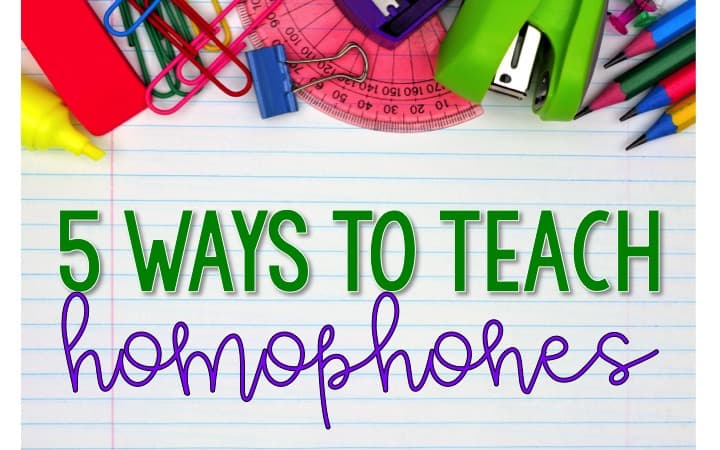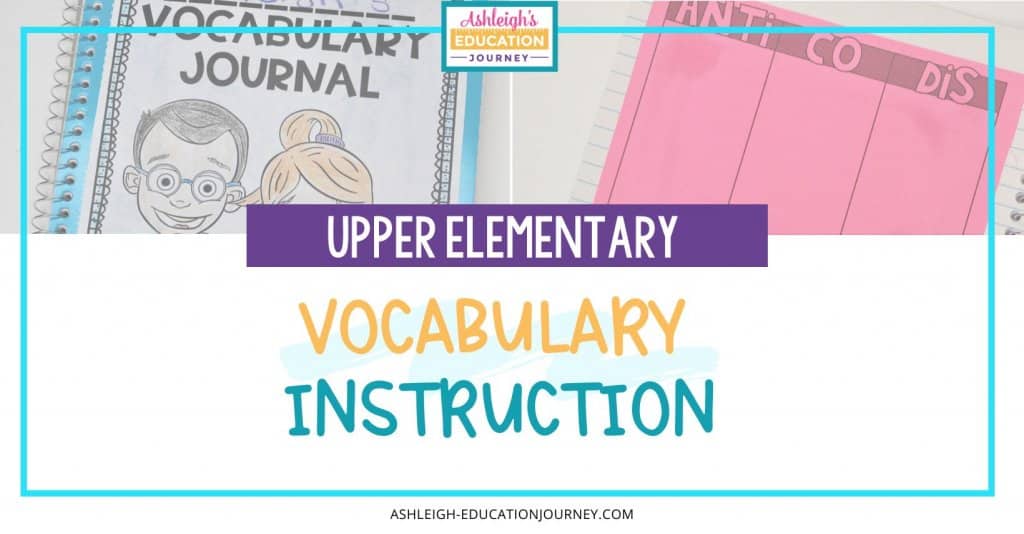
This post shares some of my favorite strategies for teaching vocabulary. As a reading teacher, the quote below certainly hits home. These are such powerful words concerning the importance of upper elementary vocabulary instruction, which is often neglected in today’s classroom.
“Vocabulary is the best single indicator of intellectual ability and an accurate predictor of success at school” – W.B. Ellet.
There has been a great deal of research concerning the importance of vocabulary within reading instruction. There have also been debates over the best strategies for teaching vocabulary.
Some students naturally acquire vocabulary words as an effortless process. These are often children that hear a wide variety of words spoken at home, and those words become part of the child’s vocabulary. However, this effortless connection does not happen for our at risk students. Researchers found that 3-year-old vocabulary levels were indicative of their reading success in upper elementary grades, and the gap grew wider as children progressed through school.

My first few years teaching, my vocabulary instruction was limited to science and social studies terms. However, the book Bringing Words to Life by Isabel L. Beck completely transformed my views on strategies for teaching vocabulary. While science and social studies terms are important, they are not broadly used words. We must also teach words with a broad application. Beck breaks words down into three different tiers, and our upper elementary vocabulary instruction should focus on Tier 2 words.
Tier 1: Common Words
These are everyday words that most students already know. These words do not require vocabulary instruction. If you are teaching English language learners, you may find that these students will need instruction with Tier 1 words.
Tier 2: Useful Language
Tier 2 words are academic words that are general enough to appear across all domains, yet are not part of students’ everyday language. The CCSS refer to them as general academic words. These words help students move past the “lexical bar” – a hypothetical barrier that exists between social, conversational language and more formal, sophisticated language that helps students succeed academically. Most strategies for teaching vocabulary will focus on tier 2 words.
Tier 3: Infrequent, domain-specific words
Tier three consists of low-frequency words that occur in specific domains. Yes, these words are important, but they should not make up the majority of our vocabulary instruction.

Strategies For Teaching Vocabulary – What does this mean for teachers?
The biggest improvement to vocabulary comes from reading, so we need to make sure our students are consistently reading and being read to. However, students rarely learn a word the first (or even second, third, fourth, etc.) time they encounter the word. Vocabulary instruction should include planned teaching of selected words. For students to learn new words, they must connect new and existing knowledge. Students learn new words best when they see them presented meaningfully, and students need to use the new words in meaningful contexts and think about the words in meaningful ways. Therefore, having students look up words in a dictionary and memorize definitions are not enough for quality vocabulary instruction. Copying definitions is not one of the effective strategies for teaching vocabulary.
Upper Elementary Vocabulary Interactive Notebook
In order to develop more robust vocabulary instruction, I’ve created a packet of interactive notebook activities to coincide with my reading instruction. Each week my vocabulary instruction follows the same format to provide consistency and to allow me to move at a rapid pace.
I’ve tied my vocabulary program into my Reading Workshop units, but it can be used with any reading curriculum. All of the words I selected are Tier 2 words from the books I use as mentor texts. I use a spiral-bound notebook for students’ vocabulary journals. The first few pages of the notebooks are used for a word bank. I have students glue-in pages to the journals which helps them organize the words that they find. This is where students collect new or interesting words they come across in their reading.

The following pages include a word bank for prefixes and suffixes. Once again I have students glue-in these pages in their journals, and this is where students can add new words with various prefixes or suffixes. You can read more about how I teach prefixes and suffixes here.
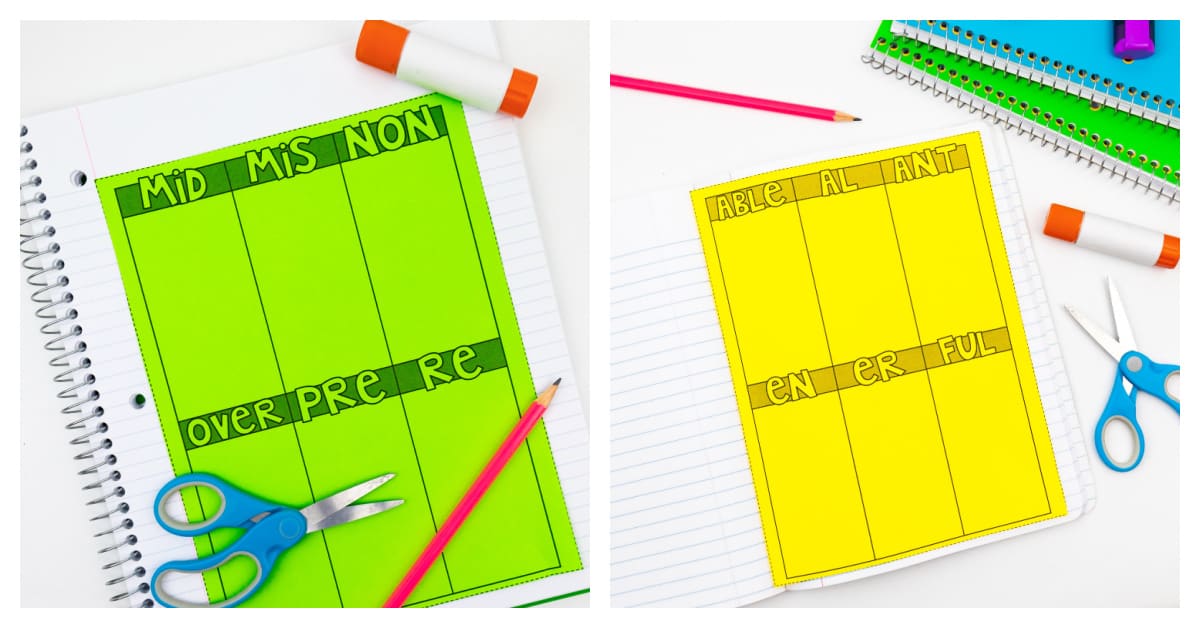
Having a routine incorporated with your strategies for teaching vocabulary allows you to stay consistent, and it makes planning vocabulary instruction so much easier. Try to keep your vocabulary instruction short and sweet-about ten minutes a day. It’s makes teaching vocabulary a realistic goal. Throughout the week, I am able to incorporate the most effective strategies for teaching vocabulary.
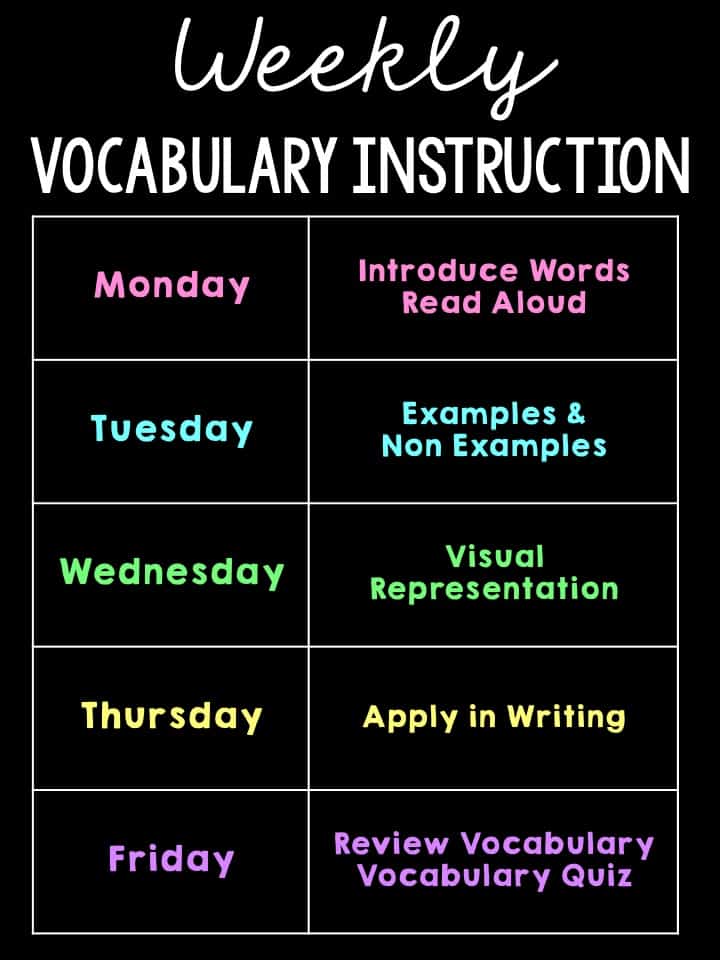
Monday
I begin Monday by distributing students’ vocabulary cards. As a class, we generate student friendly definitions of the words and students write the definition on the vocabulary card. Underneath the definition, students can mark the part of speech for each of the words.

I follow the introduction of words with our reading mini lesson where I briefly teach a specific skill or strategy. I then read aloud our mentor text that compliments with our mini lesson. All of the vocabulary words for the week are found in that day’s text.
Tuesday
On Tuesdays, we work together to brainstorm examples and non-examples of each of the six vocabulary words. Students create a flipbook and glue it on the page to the right of their handout from Monday. When students write the vocabulary word, they should write it at the top, because they will be adding pictures to the outside flaps.

Strategies For Teaching Vocabulary – Wednesday
After students have two days of exposure to the word, they are ready to draw a picture to represent the word. This visual representation allows students to internalize words and helps store the words in students’ long term memories. I only give students 1-2 minutes to draw for each word, so this lesson doesn’t take forever!

Strategies For Teaching Vocabulary – Thursday
It is difficult for students to apply new words in their writing, so I do not have students attempt this until they have experienced the word multiple times. On Thursday, students write their words in a sentence. They do this on the page that was glued in on Monday. As an extension, I have students look through their writing notebook to see if there are any areas where they could add the words to their writing. I don’t require this, because I want the use of the words to sound natural, rather forced.
Strategies For Teaching Vocabulary – Friday
I have included an assessment for each week’s words. If I give an assessment, I typically do this on Friday. The assessment is a combination of matching, multiple choice, and short answer.
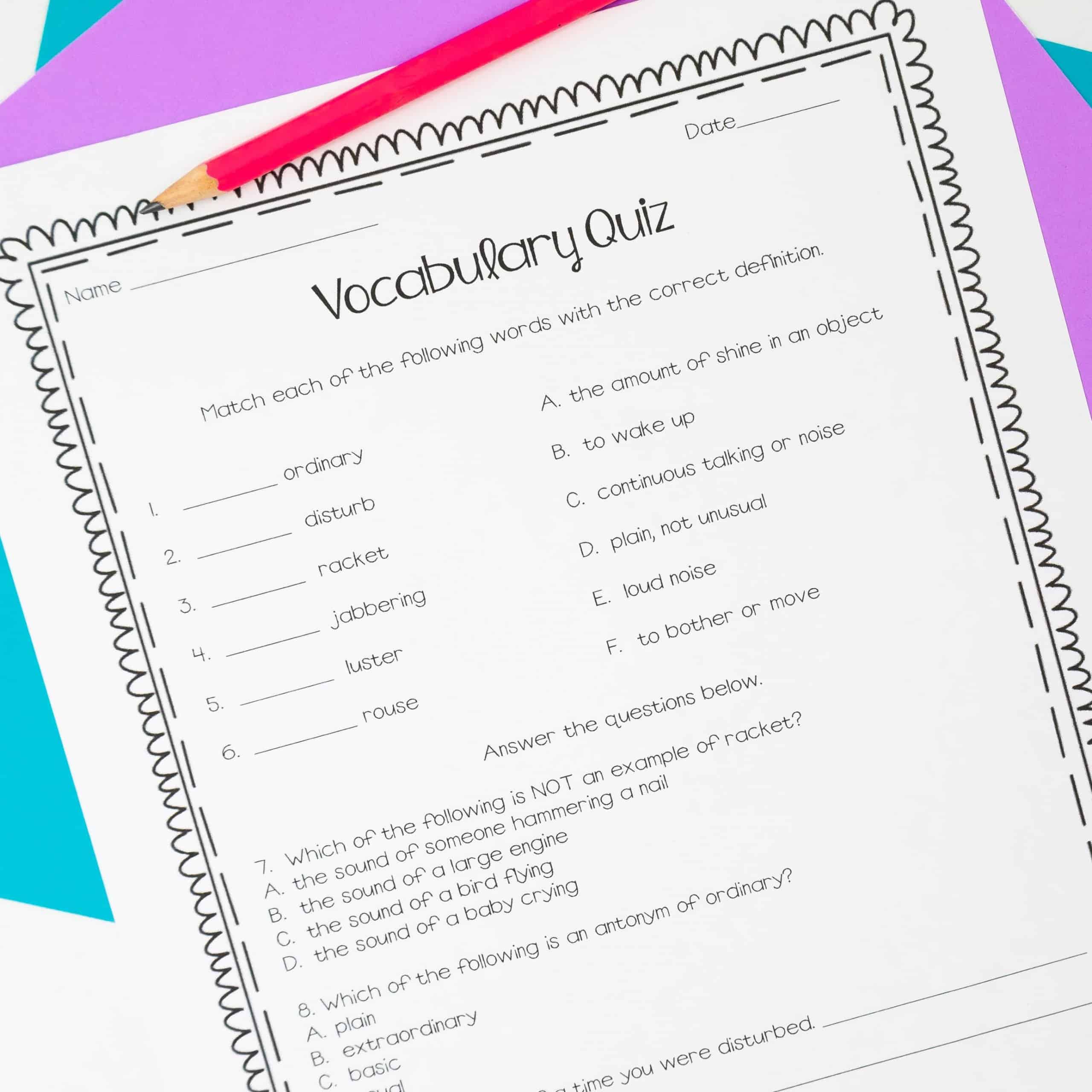
For students to retain and use the vocabulary words, we must review the terms students have previous learned. I don’t give an assessment every Friday, because I like to have students play review games instead. I’ve included a collection of ideas for easy to prep games that students will love. There word cards for each week’s words that you can use for students’ vocabulary games. This is a frequently skipped strategy for teaching vocabulary, but it’s important for students’ retention.
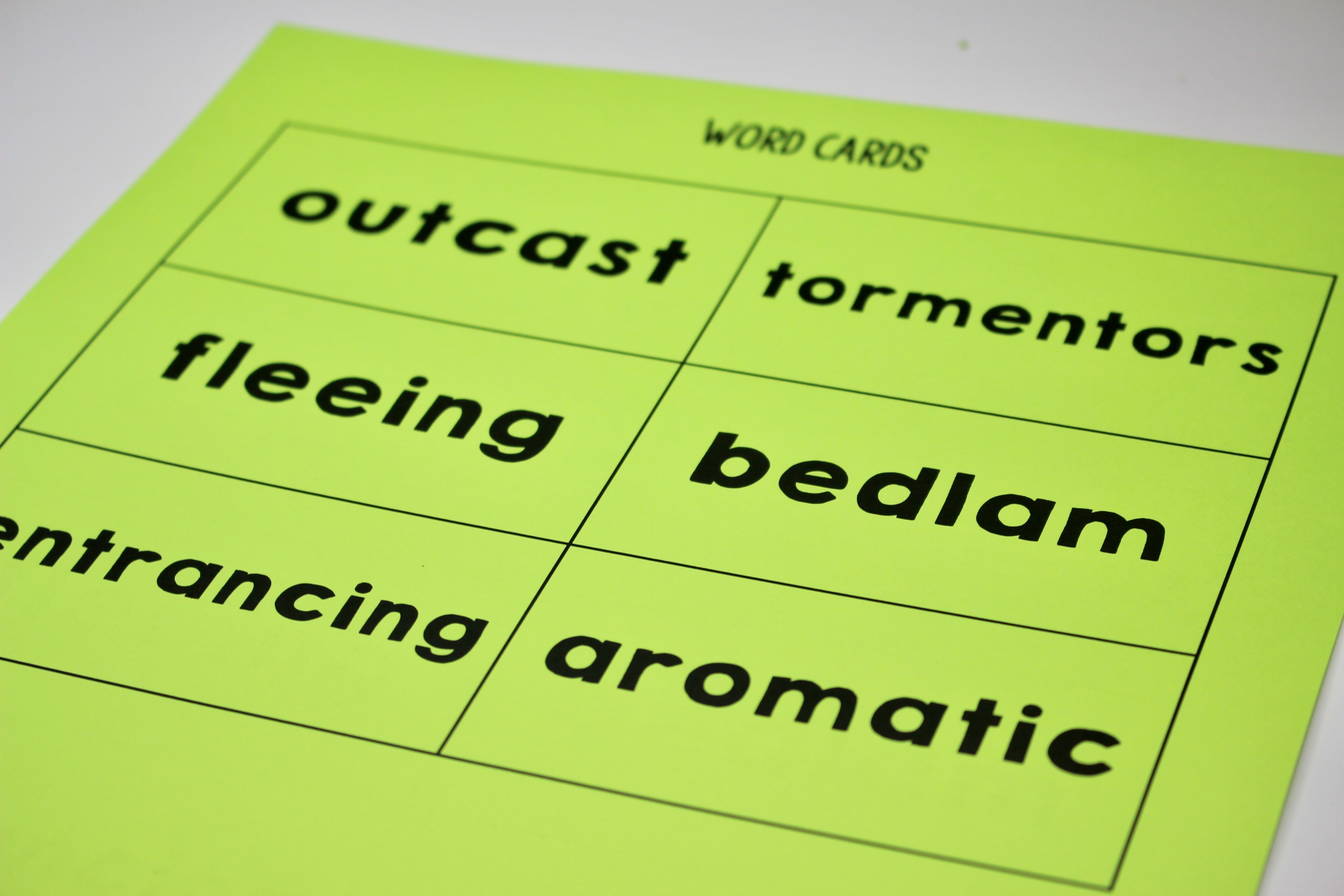

I also included weekly posters that you can display around the room for a little reminder. The posters include a picture of the book those specific words appeared in to allow students to more easily make connections to the words.

Hopefully, you’ve found some new strategies for teaching vocabulary. I have everything in my TpT store, and you can check it out here!

If you’d like to learn more about what I do in my reading groups, be sure to check out this post!



